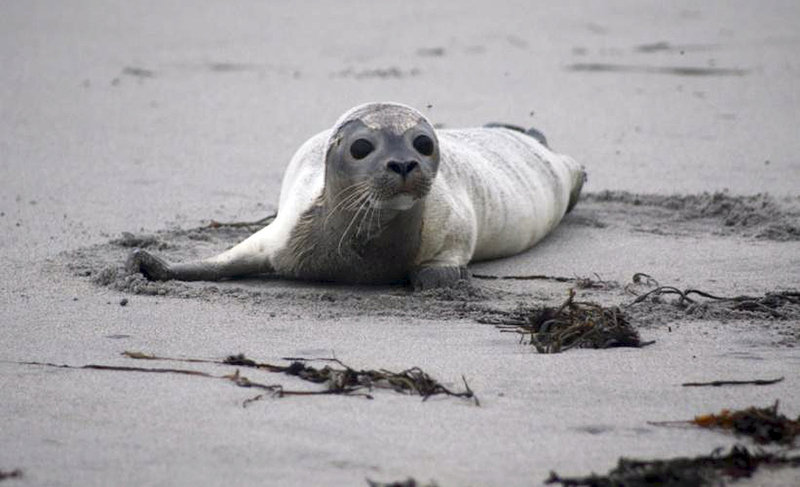An influenza virus similar to one found in wild birds but never before found in seals has been linked to the recent deaths of harbor seals in northern New England, scientists said Tuesday.
Since Sept. 1, 162 seals have been found dead in an area from northern Massachusetts to Maine.
The die-off struck young seals and was most intense in September and October, when deaths were about three to four times the normal number, said Charles Innes, the New England Aquarium’s health director. The death rate has since slowed to normal levels.
Tests on five of the dead animals – all from New Hampshire – showed they suffered a bacterial pneumonia caused by the influenza virus subtype H3N8. Tests are continuing, to determine what role the virus played in the broader die-off, researchers said.
Scientists said the virus appears to have low risk for transmission to humans. But Catherine Brown, state public health veterinarian in Massachusetts, said when influenza jumps between species, it’s important to try to learn why.
“Every time that happens, the more we can learn about what causes that to happen, the more we can actually work to prevent it from happening and protect human health, as well as animal health,” she said.
Other influenza viruses have been linked to at least three other seal die-offs in New England since 1979.
This time, the first calls about dead harbor seals came from surfers in New Hampshire in early September. Scientists said Tuesday that there are no known environmental or man-made causes to explain it.
So far, the outbreak has been exclusive to harbor seals, though other seal species are active around New England. Gray seals have become famous, or infamous, for gathering in huge numbers off Cape Cod, and juvenile harp seals are expected to make their annual appearances around the coast by the end of the month.
Hon Ip, head of the Diagnostic Virology Laboratory at the National Wildlife Health Center, said since almost all animal influenzas can be traced back to birds, it’s prudent to pay close attention when a virus leaps from birds to a species that is also susceptible to human influenza strains.
It’s not known to be happening in this case, but such viruses can become more virulent after making that jump, Ip said.
Send questions/comments to the editors.



Comments are no longer available on this story